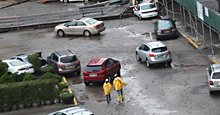
You’re driving your family on Highway 35 south of Des Moine, IA, and the sky turns pea-green. Winds kick up and a horizontal rain pelts your vehicle.
What now?
Whether you live in a hurricane zone or plan to travel to one, preparation is key. Keep a well-stocked safety kit and take steps to avoid being on the road during the brunt of the storm.
“It’s imperative to make safety a personal priority. Don’t move about the roadway unless you absolutely have to,” said Staff Sgt. Robert Singleton of the Sumpter Police Department in Sumter, South Carolina. “If you have to drive, pay attention to your surroundings. Don’t drive through standing water and pay attention to traffic signals.”
Hurricane season technically lasts from June 1 to November 30, with the peak season running from late August through September, according to the National Weather Service.
Meteorologists are very adept at predicting the path of a hurricane, but storms can and do deviate from their expected course.
Experts recommend keeping an eye on the forecast and breaking news updates to avoid getting caught off-guard.
Storm chaser Tim Marshall offers the following suggestions for staying safe on the roadways during hurricane season:
-
Ask your service advisor to check tire depth and battery power. Insufficient tread can cause sudden sliding and a fully charged battery can keep your accessories powered in case of emergency. Also, don’t forget to inspect the spare tire.
-
Mind the windshield. Clean and apply a water repellent to the windshield for improved visibility in heavy downpours.
-
Be particularly aware of your surroundings. Drive defensively, be ready to slow or stop quickly and without warning.
-
Never drive through water flowing across a road. Just six to 12 inches of moving water can sweep away a small vehicle.
-
In standing water, drive slowly to prevent your vehicle sliding.
-
Never drive around barricades. After all, that road is closed for a reason. Sinkholes and washed out roadways are commonly effects of hurricanes and thunderstorms.
-
Expect debris. Watch out for tree limbs and debris in the roadway. Even small branches can damage a car or cause the driver to lose control.
-
Familiarize yourself with the evacuation locations in your area.
-
Tune into weather forecasts before you head out.